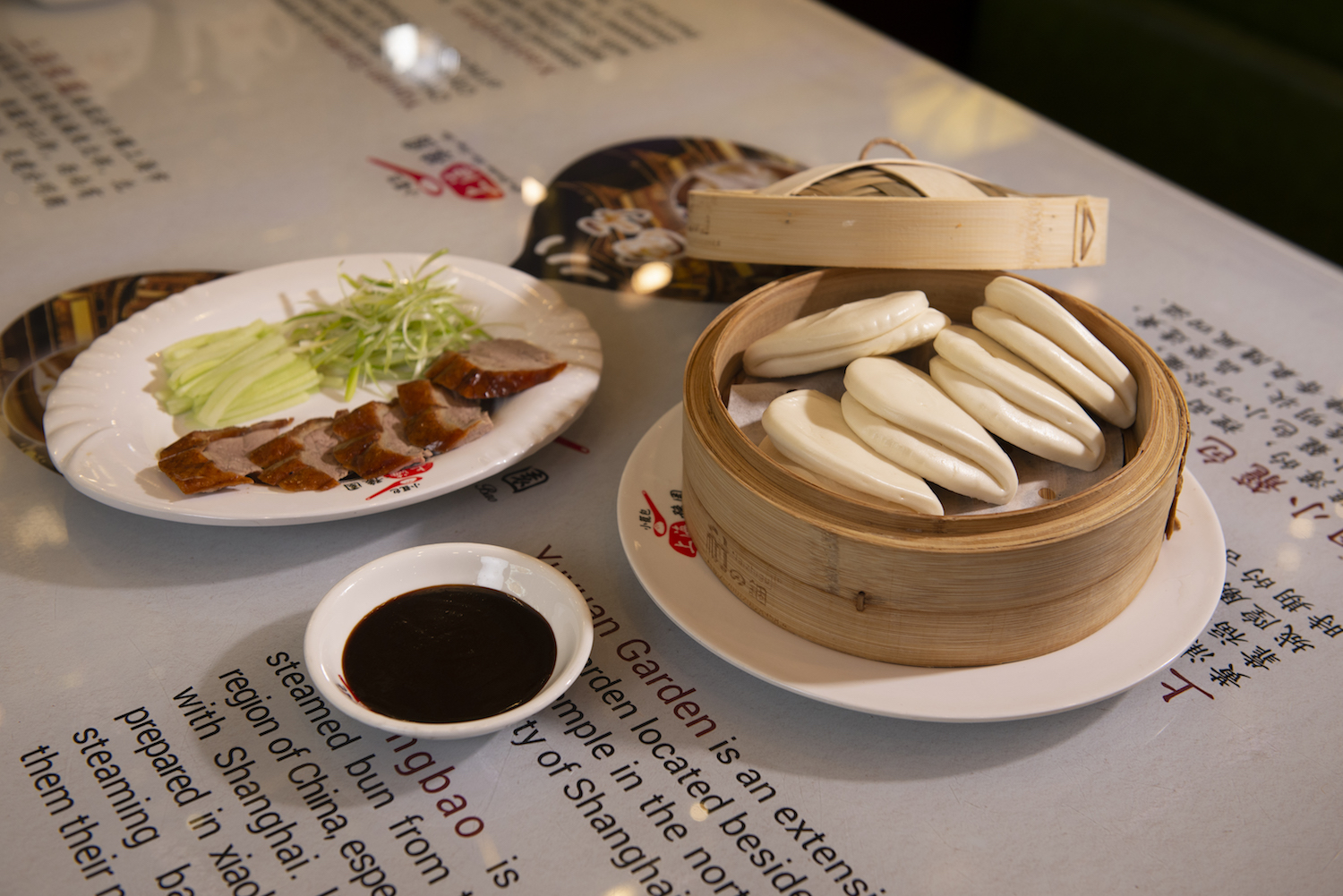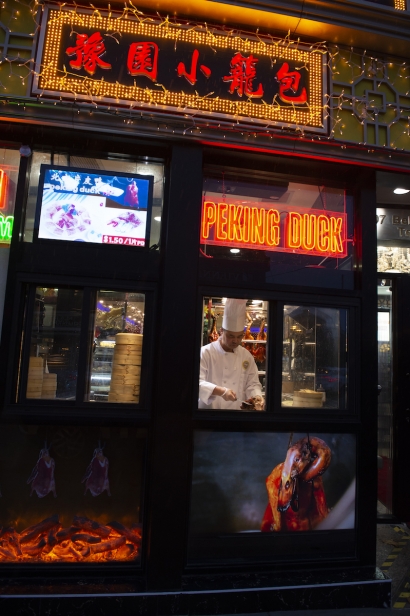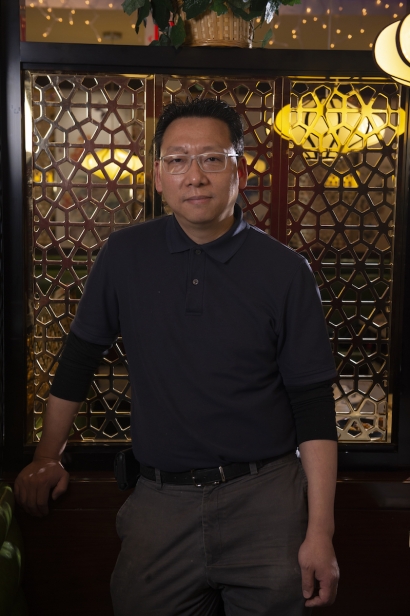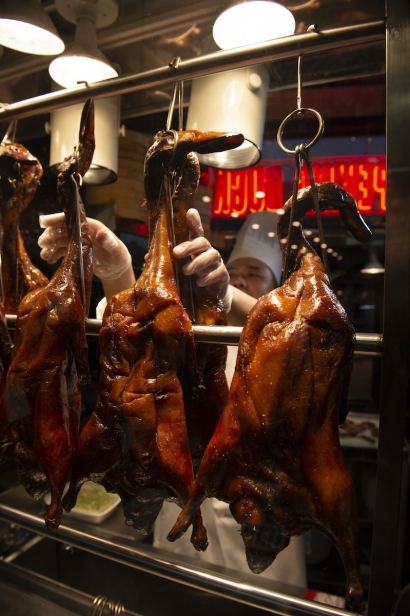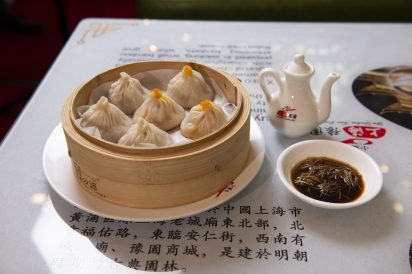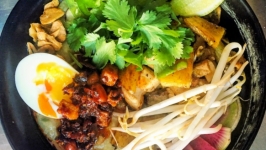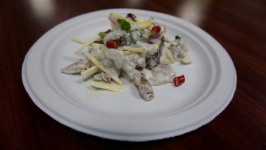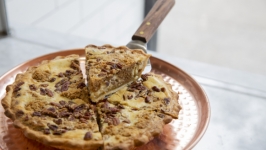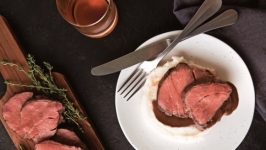You Garden Xiao Long Bao: Peking duck of a different feather
To make Peking duck, Alan Gao’s kitchen staff puffs up air between the duck’s skin and flesh, allowing the exposed fat to render down and the skin to crisp up. Crispy skin is the requisite, labor-intensive hallmark of Peking duck. They then stuff the inner cavity with 12 ingredients, including bay leaf, cardamom, cinnamon sticks and a special salt mix heated in a wok.
“That’s why even the bone would be tasty,” Gao, You Garden Xiao Long Bao’s owner and manager, says through a translator. “The duck is seasoned inside and outside. It’s a very long and complicated process.”
Not to be confused with the everyday Cantonese-style ducks hanging from their necks in Flushing or Chinatown storefronts, Peking duck signifies a fancy affair once exclusive to China’s imperial elite. Nowadays, it’s for celebrating birthdays, your mom visiting you, the boss taking you out. A whole duck appears tableside, and the server ceremonially slices the crispy outer layer in front of hungry spectators who then assemble buns, duck and trimmings themselves.
But Gao has disrupted the traditional Peking duck game, and at $1.50 per pre-assembled duck bun—and a free sample per table (a promotion whose end Gao has been contemplating)—he has brought it to the masses at his new restaurant, which opened in August 2018 on Bell Boulevard. (You Garden is the Bayside offshoot of his perennially popular Flushing restaurant.)
“Why can’t everyone have duck at any time?” he asks. “It’s difficult to buy the whole duck. It’s expensive. And you can’t eat the whole thing.”
This is where the buns come into play: soft and airy, a little sweet, made of white flour and shaped into flat, elongated ovals that eventually fold over the fillings. Their duty at You Garden is to clothe the imperial Peking duck.
“I chose buns because you can put all the ingredients inside them and create a small, little warm sandwich,” he says.
While some Peking duck houses serve the larger, flatter, chewier wraps resembling tortillas, Gao prefers the airier accompaniment. Inside the soft bread is a slice of duck, strips of julienned cucumber, spring onion and a smear of a sweet bean sauce containing hoisin and honey.
The duck bun is a bestseller among 115 Shanghainese menu items. The restaurant roasts 30 Peking ducks for around 900 duck buns; on weekends, 50 ducks for about 1,500 buns. Once they’ve sold out, you’ll have to try your luck another time.
These Peking duck buns put him on the map, Gao explains. BuzzFeed featured his duck buns at his first Corner 28 restaurant in Flushing. On Yelp, the buns figure most prominently in photos and reviews. And Gao is proud of it.
In Shanghai, he grew up poor, with gourmet aspirations. “I would just look at Peking duck, and it looked so delicious, but I couldn’t afford it.” He worked in restaurants there, and he recalls his first time finally eating Peking duck. A table of customers hadn’t finished their order, leaving behind crispy, brown slices that the staff shared. “It was so amazing!”
Now with three restaurants under his belt since immigrating to the United States in 1998, Alan Gao says he eats two to three duck buns a day. Move over, goose. This one’s a golden duck.


